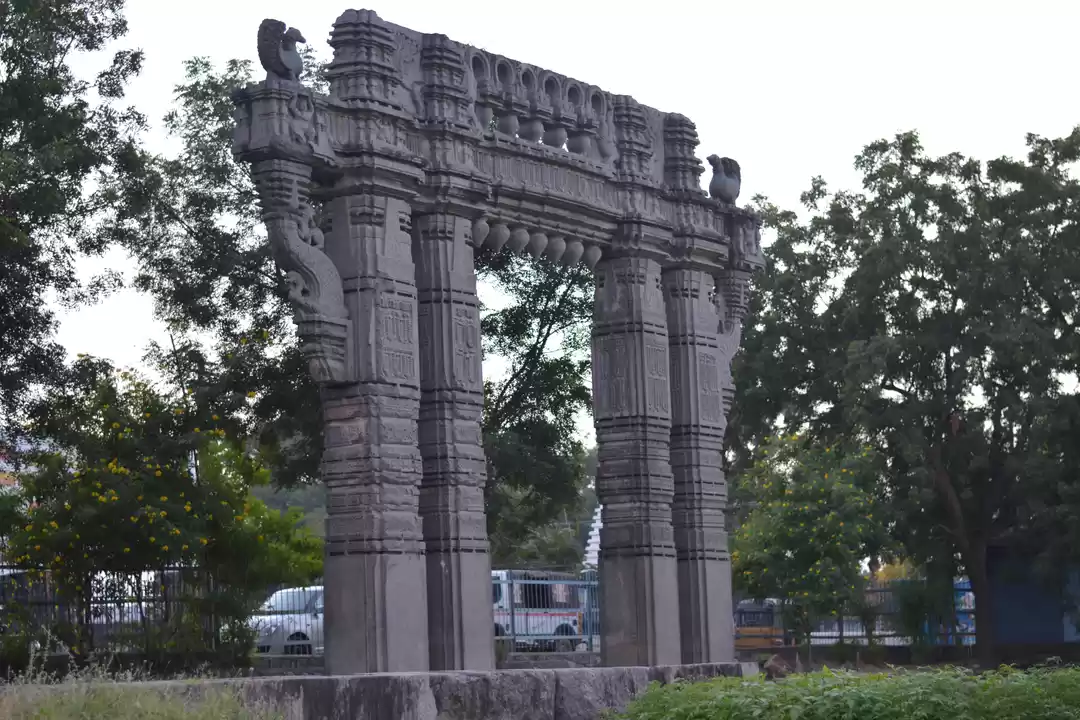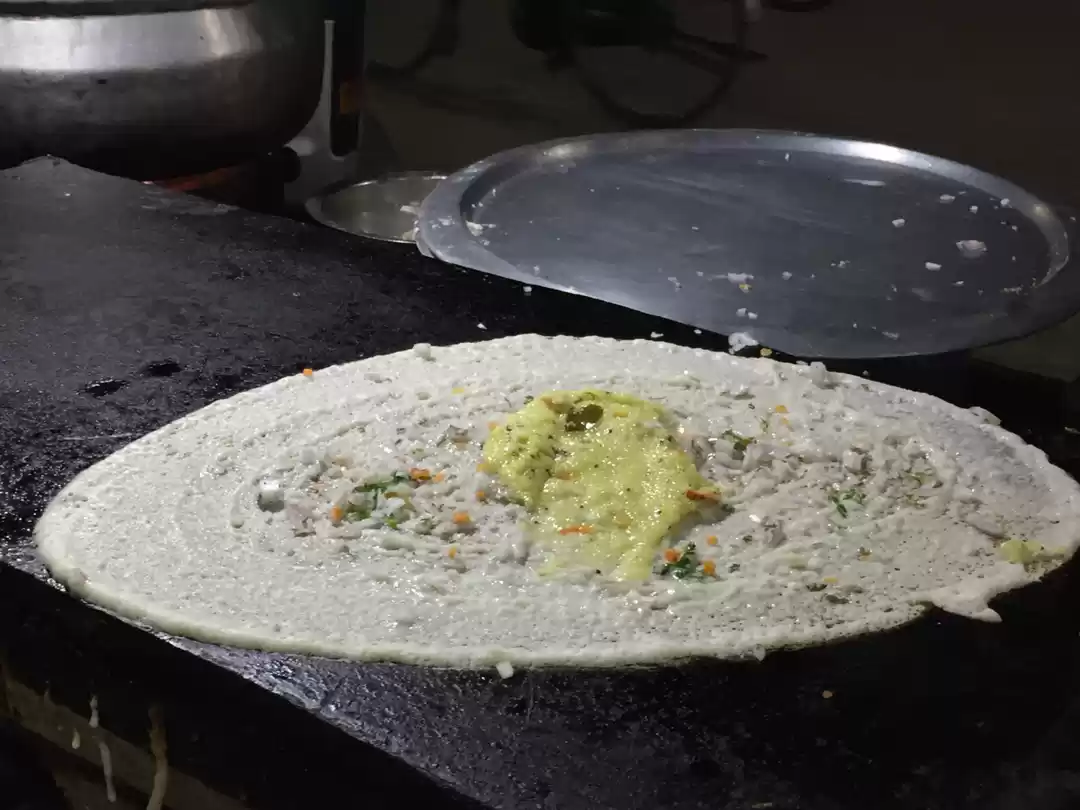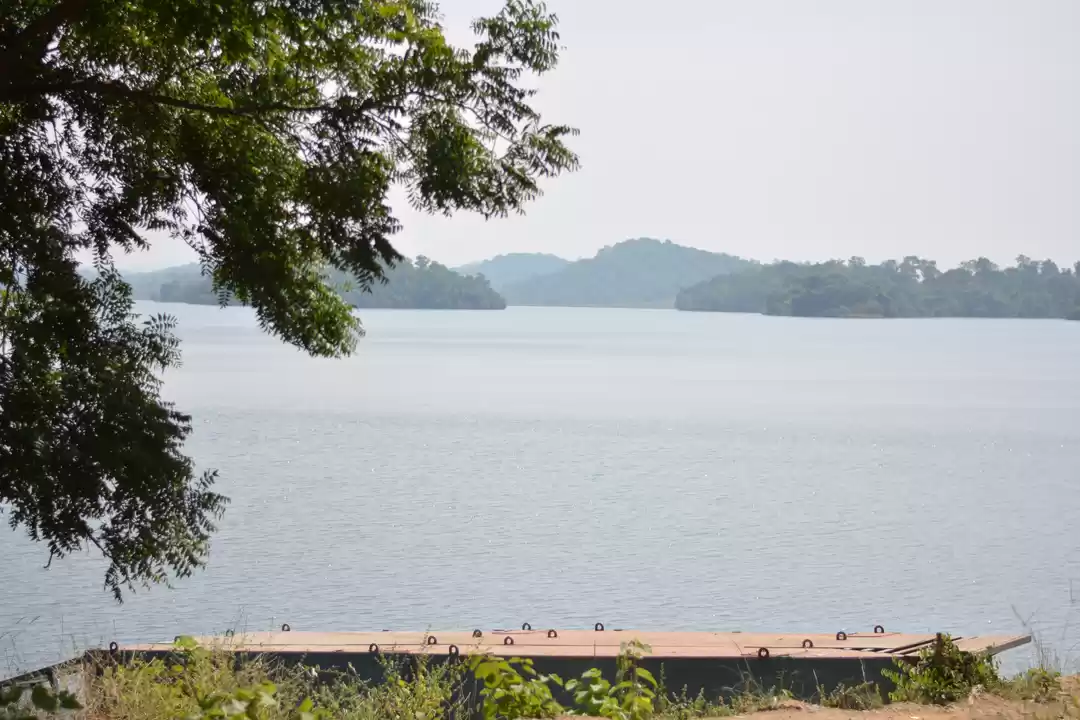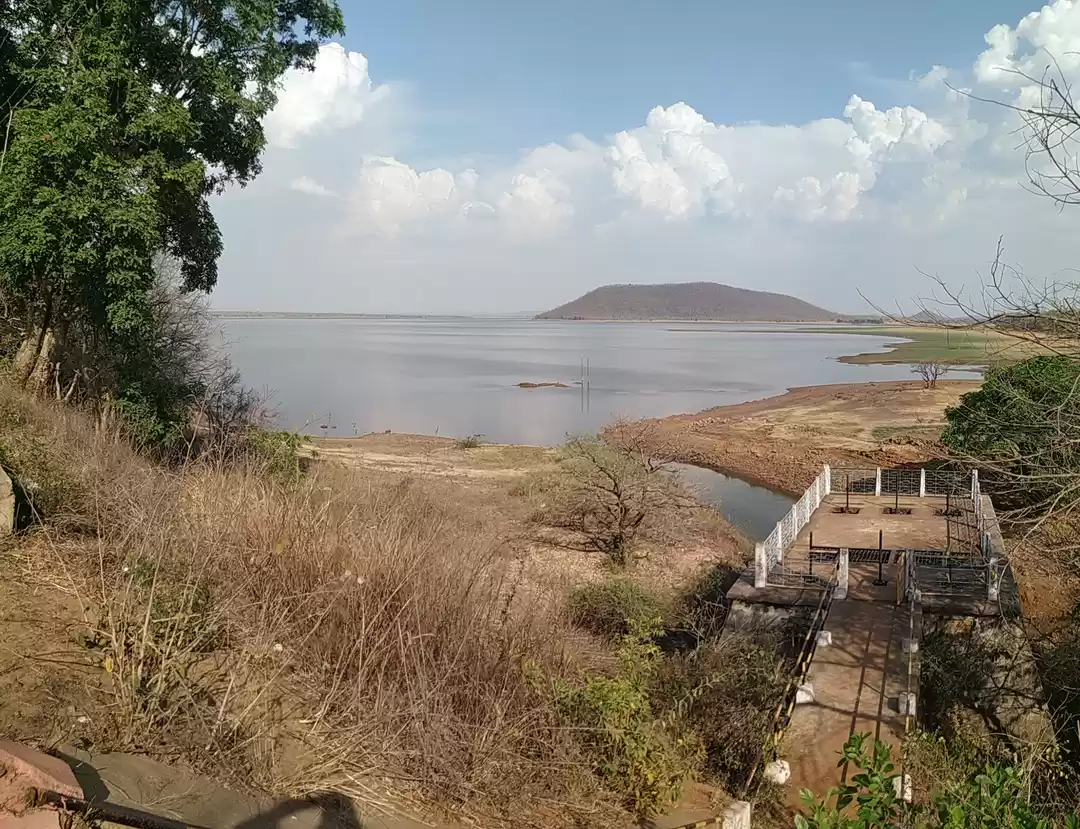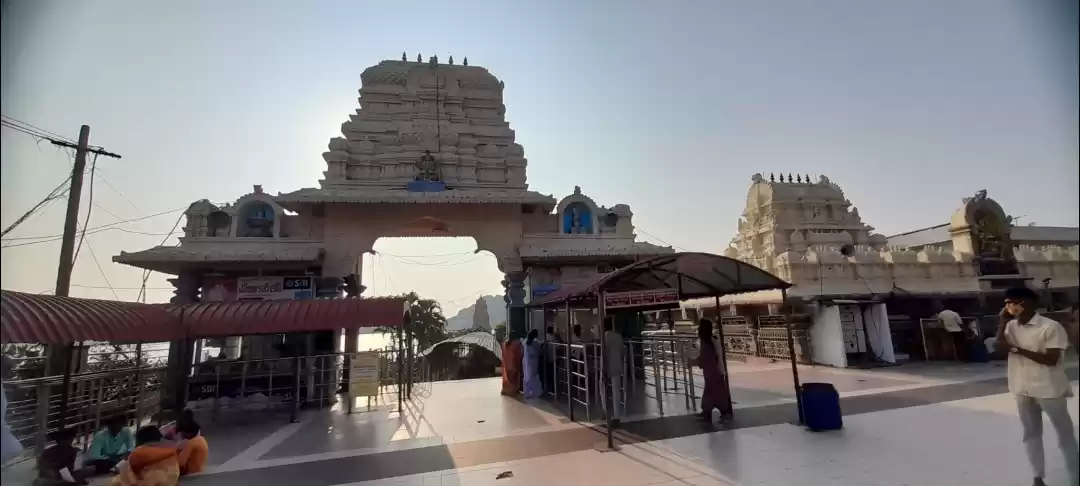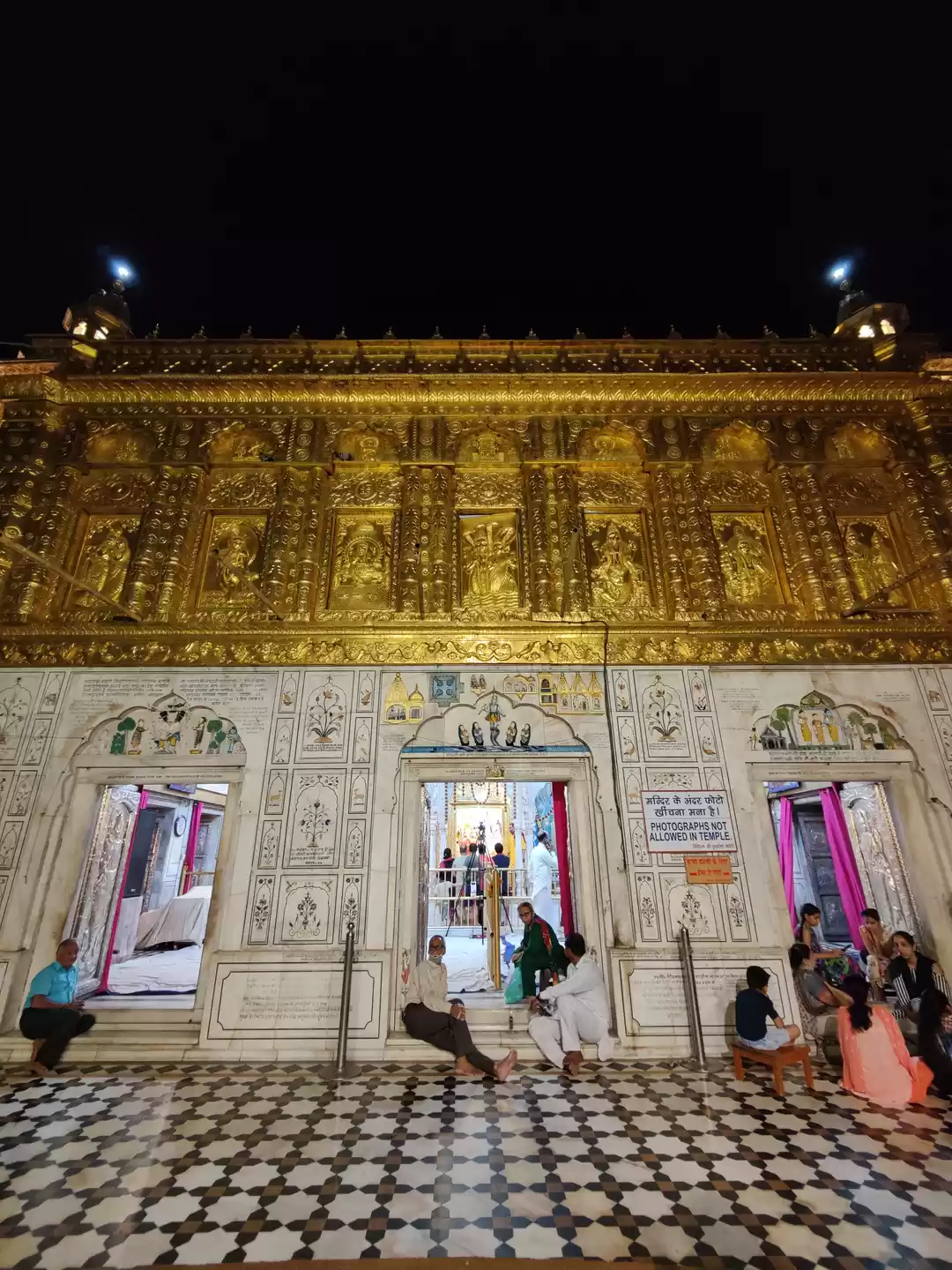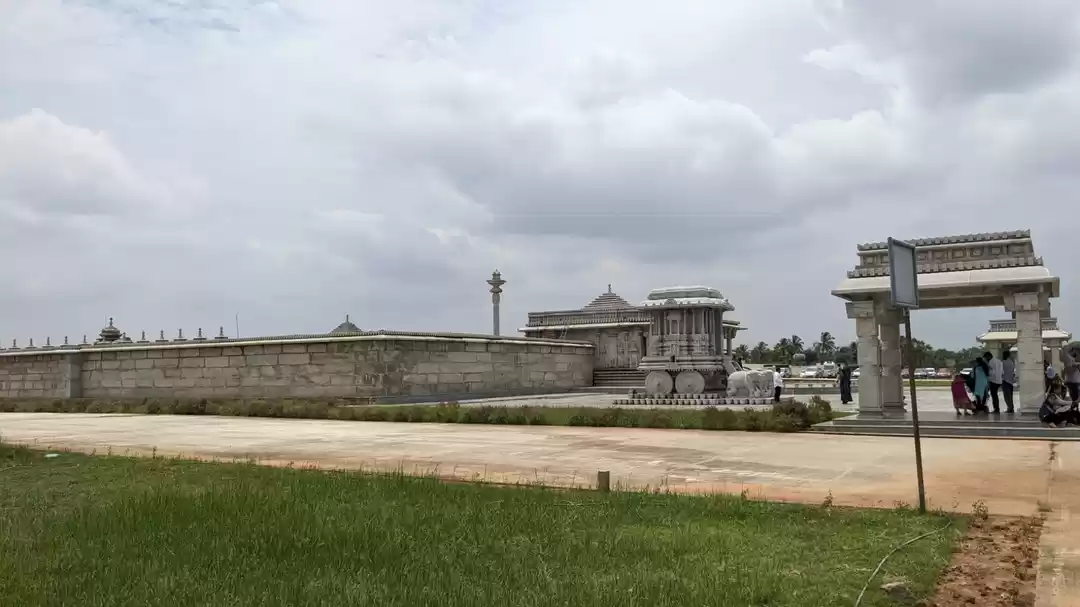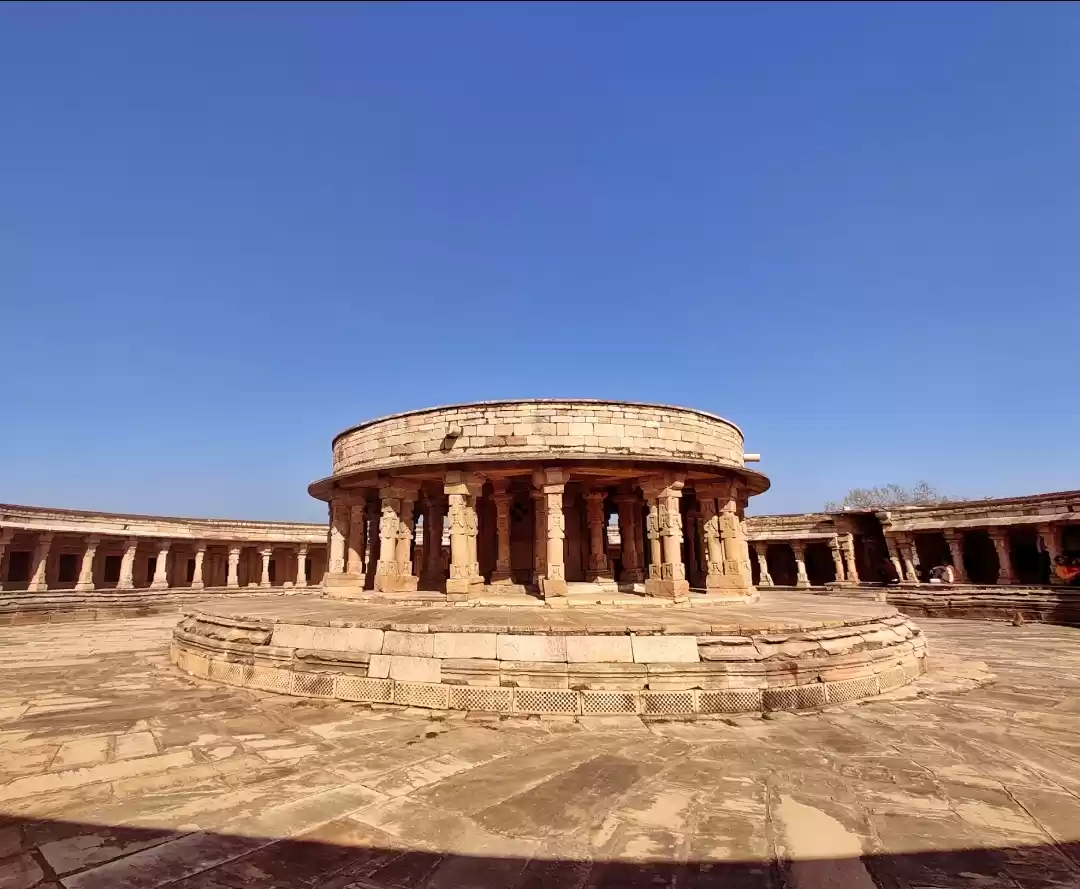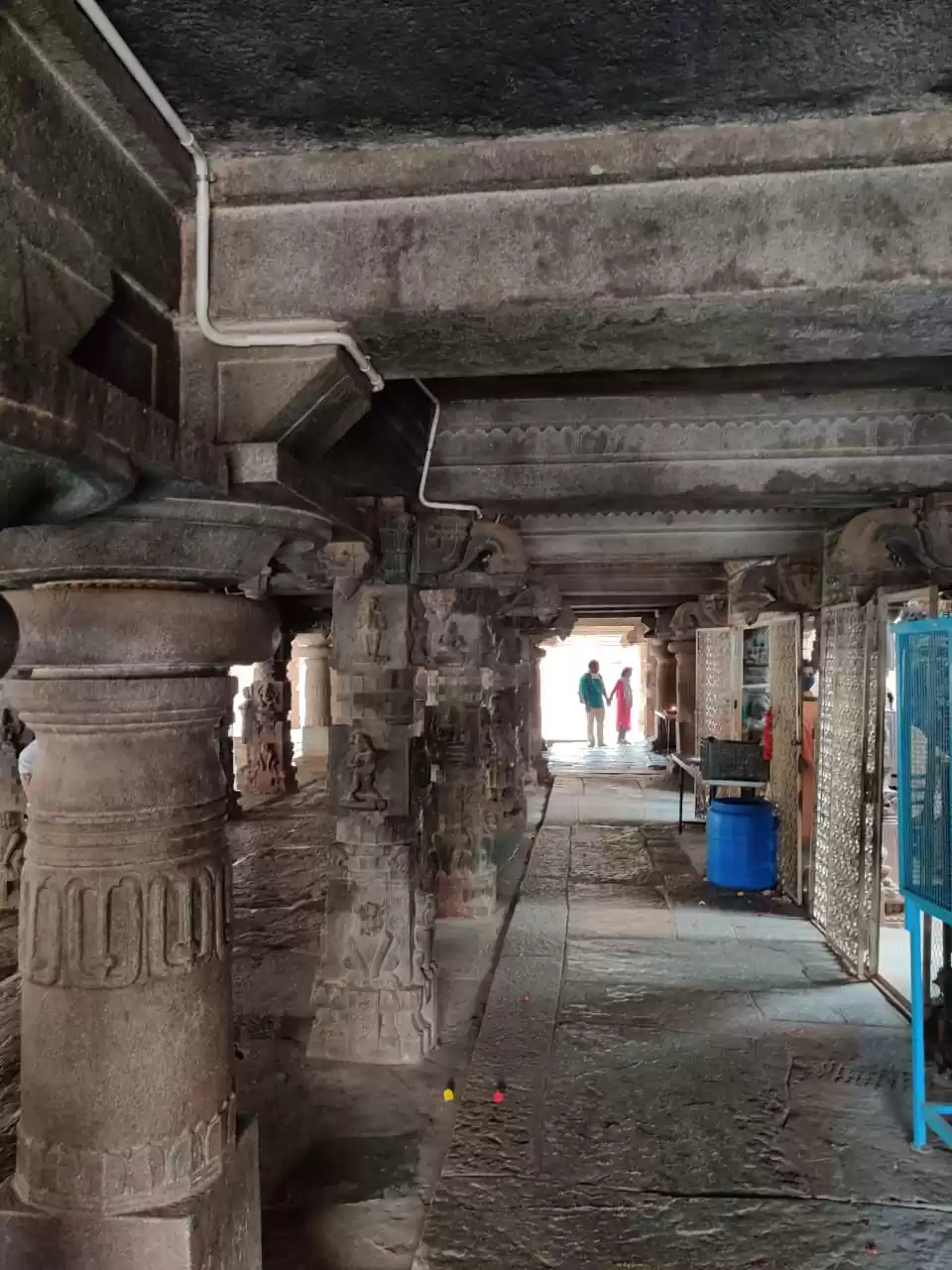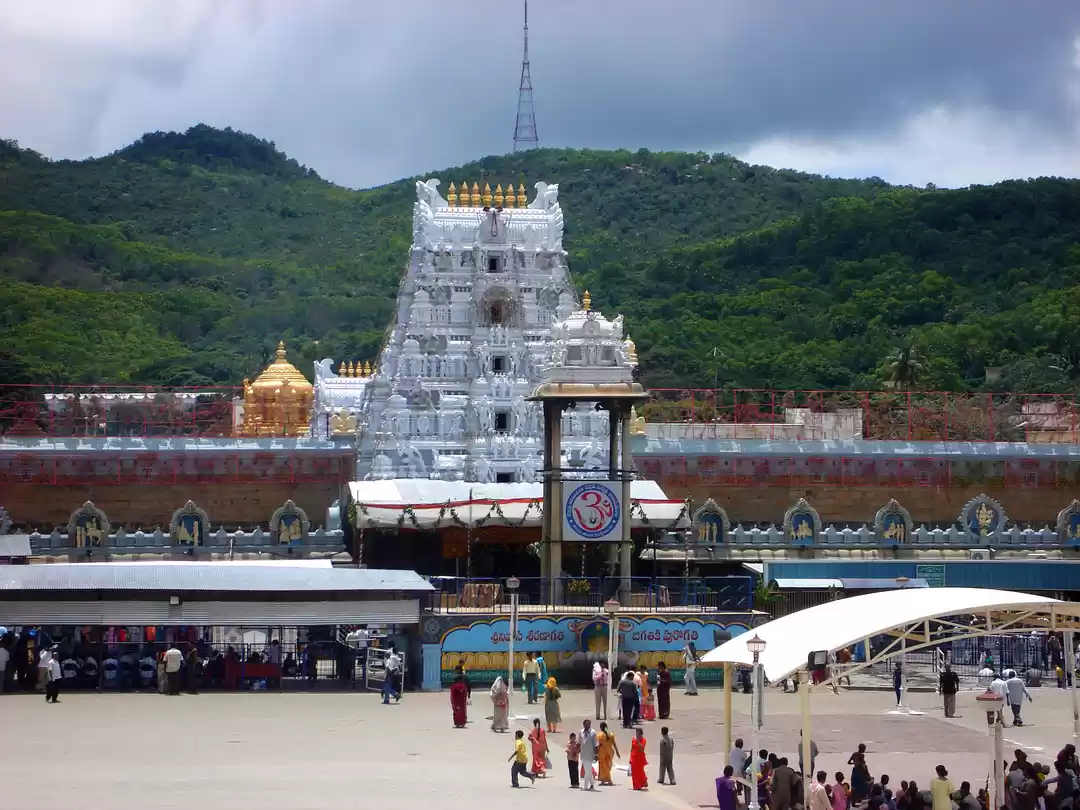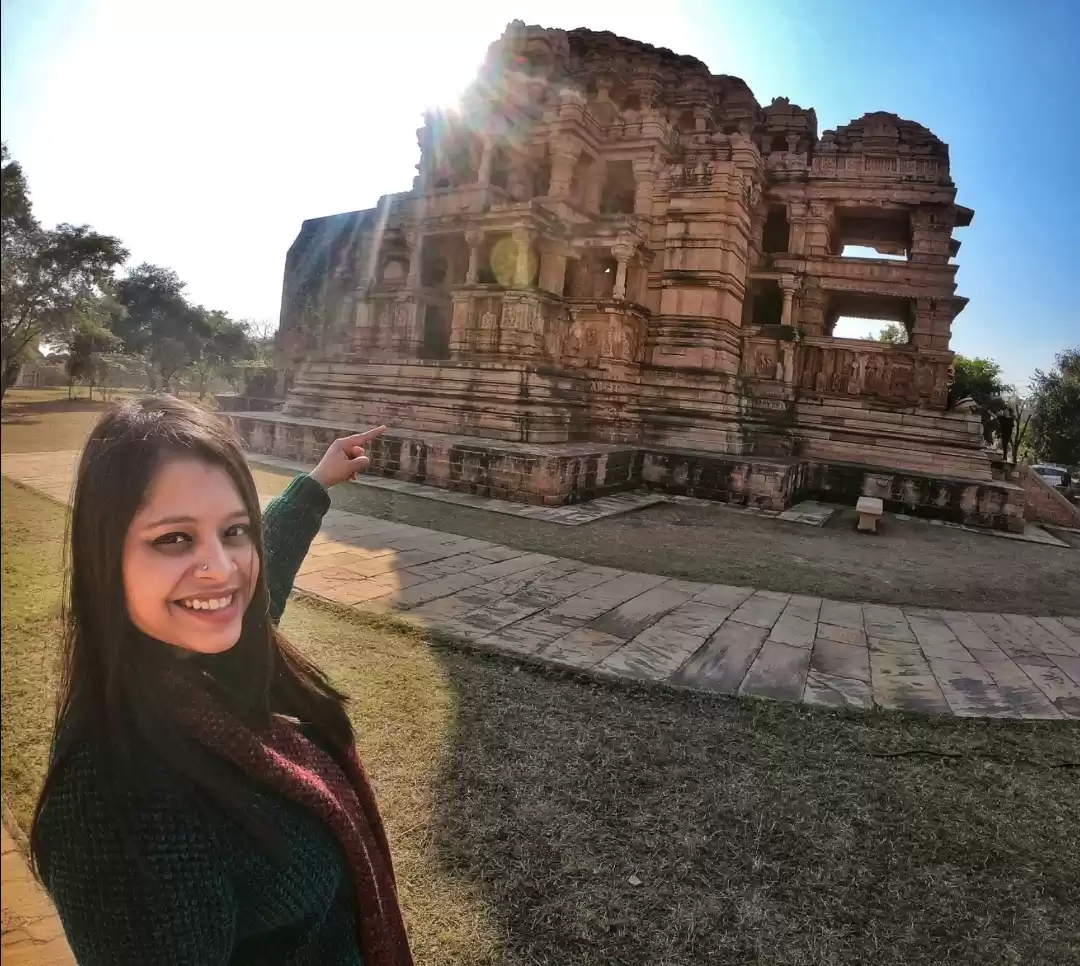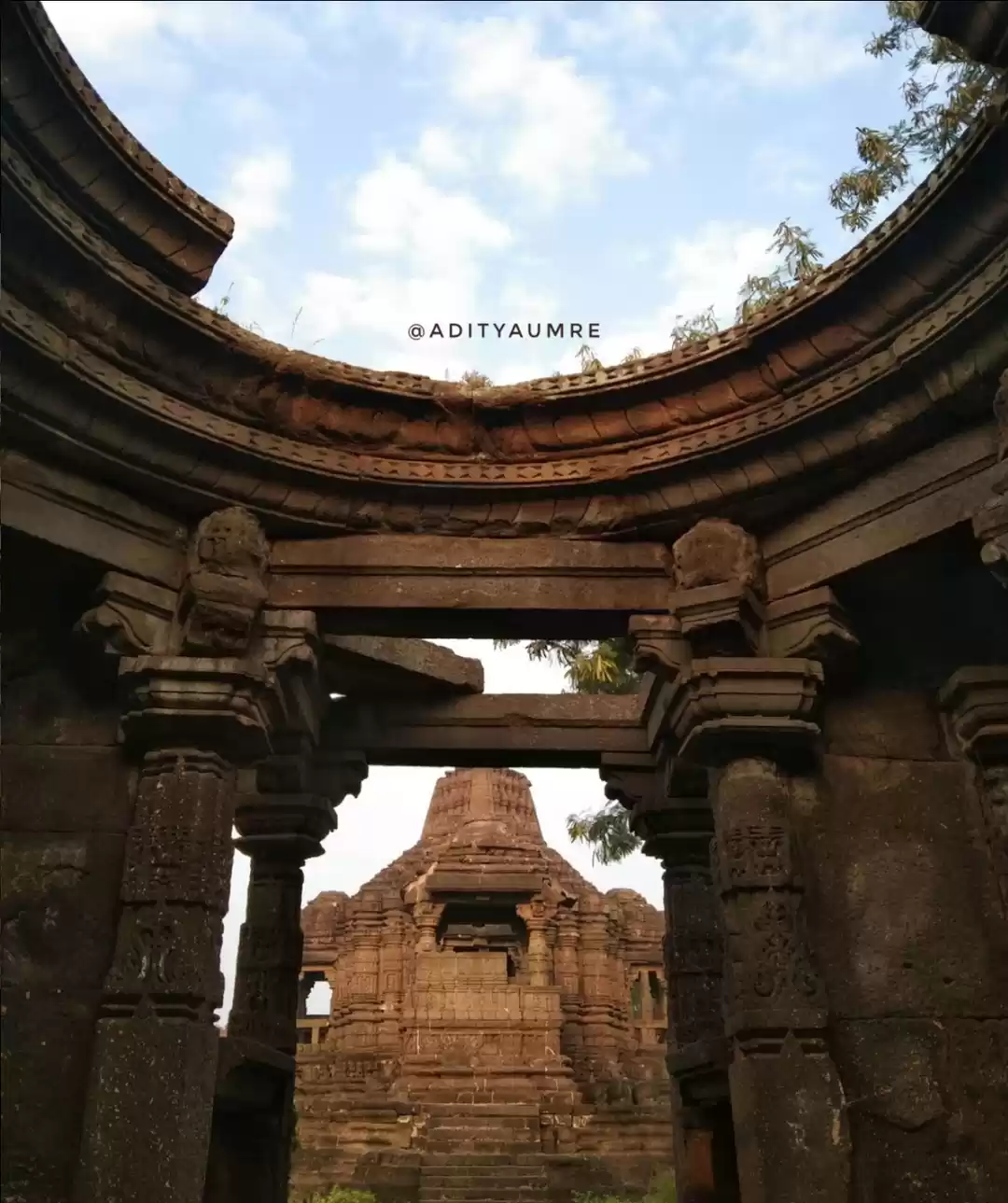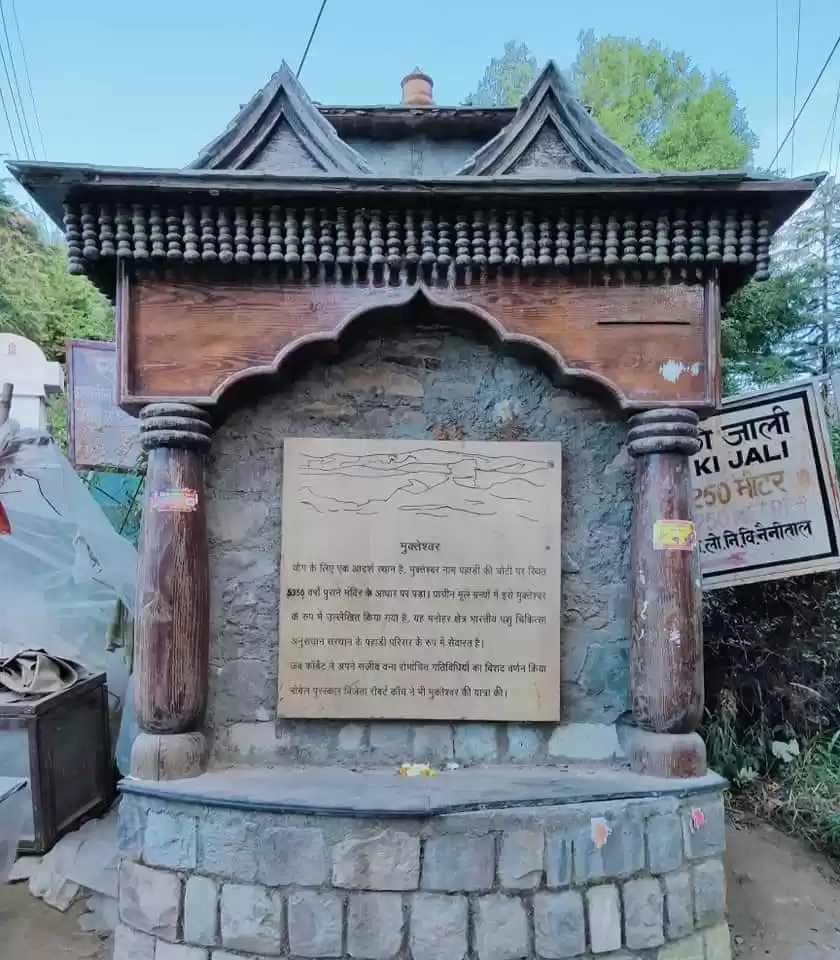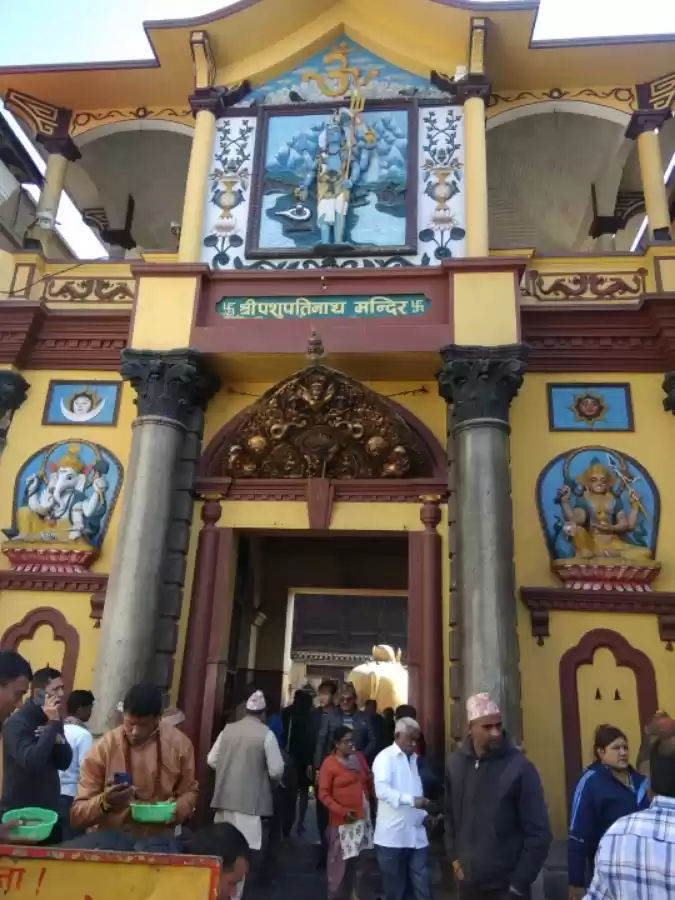Have you ever wondered what it would be like to visit a temple that is older than the Taj Mahal, the Qutub Minar, and the Red Fort? A temple that has witnessed the rise and fall of dynasties, the invasion and plunder of foreign armies, and the restoration and revival of faith and culture? A temple that houses one of the most powerful and mysterious deities in Hinduism, who is believed to have bestowed the legendary Koh-i-Noor diamond to a king? If you are curious to know more, then you should definitely plan a trip to the Bhadrakali Temple in Warangal, Telangana.
Bhadrakali Temple is one of the oldest and most revered temples in India, dedicated to Goddess Bhadrakali, a fierce form of Shakti, the supreme feminine energy. The temple is located on the banks of the scenic Bhadrakali Lake, surrounded by natural rock formations and lush greenery. The temple is known for its unique architecture, rich history, and spiritual significance. It is also a popular tourist destination, as it is close to many other historical and cultural attractions in Warangal.
In this article, we will guide you through everything you need to know about the Bhadrakali Temple, from its origin and development, to its features and characteristics, to its importance and festivals, to its location and accessibility, to its nearby attractions and tips for visiting. Whether you are a devotee, a history buff, or a nature lover, you will find something interesting and inspiring in this ancient shrine of Goddess Bhadrakali.
History of Bhadrakali Temple
The history of Bhadrakali Temple is as fascinating as the goddess herself. The temple is believed to have been built in the 7th century CE by the Chalukyan king Pulakeshin II, who was a great patron of art and culture. He constructed the temple as a mark of his victory over the Vengi kingdom, and dedicated it to Goddess Bhadrakali, who was his family deity and the protector of his empire. The temple was originally built in the Nagara style of architecture, with a square sanctum, a pyramidal tower, and a pillared hall.
The temple reached its peak of glory during the Kakatiya dynasty, which ruled over most of Telangana and Andhra Pradesh from the 12th to the 14th century CE. The Kakatiyas were ardent devotees of Goddess Bhadrakali, and they made several additions and renovations to the temple. They enlarged the sanctum, added a circumambulatory path, built a massive stone image of the goddess, erected a huge lion statue at the entrance, and carved exquisite sculptures of other deities on the walls. They also beautified the surroundings of the temple, by creating a large artificial lake, planting gardens and trees, and installing fountains and lights.

The most remarkable contribution of the Kakatiyas to the temple was the gift of the Koh-i-Noor diamond, which is one of the largest and most famous diamonds in the world. According to legend, the Kakatiya king Prataparudra II offered the diamond to Goddess Bhadrakali as a token of his gratitude and devotion. The diamond was embedded in the left eye of the stone image of the goddess, and it shone with a dazzling brilliance that could be seen from miles away. The diamond remained in the temple for over two centuries, until it was looted by the Delhi Sultanate in 1323 CE, when they invaded and destroyed the Kakatiya kingdom.
The temple suffered a lot of damage and neglect during the Muslim invasions and the subsequent colonial rule. The temple was abandoned and forgotten for many years, until it was rediscovered and restored in the 1950s by a group of local enthusiasts and philanthropists. They repaired the temple structure, cleaned the lake, and revived the worship and rituals of the goddess. They also installed a new idol of the goddess, made of metal and adorned with jewels, to replace the original stone image, which was mutilated and defaced by the invaders. The temple was reopened to the public in 1959, and since then, it has been attracting thousands of pilgrims and tourists every year.
Architecture of Bhadrakali Temple
The architecture of Bhadrakali Temple is a blend of the ancient and the modern, reflecting the different phases and influences of its history. The temple is spread over an area of 1.5 acres, and it consists of several structures and elements, such as:
The stone image of Goddess Bhadrakali: This is the main attraction and the highlight of the temple. It is a colossal sculpture of the goddess, measuring 2.7 meters in height and 2.3 meters in width. It is carved out of a single piece of black granite, and it depicts the goddess in a fearsome and majestic form. She has eight arms, holding various weapons and symbols, such as a sword, a trident, a lotus, a conch, and a discus. She wears a crown, earrings, and a necklace, and she has a third eye on her forehead. She is seated on a lotus pedestal, with her right leg bent and resting on the back of a lion, and her left leg extended and touching the ground. She has a serene and smiling expression on her face, contrasting with her fierce and powerful appearance. The image is considered to be one of the oldest and finest examples of rock-cut sculpture in India, and it is a masterpiece of Chalukyan art.
The lion statue: This is another impressive and imposing feature of the temple. It is a huge statue of a lion, standing at the entrance of the temple, facing the lake. It is made of stone, and it has a height of 3.6 meters and a length of 6 meters. It has a muscular and majestic body, with a mane, a tail, and claws. It has a roaring and menacing expression on its face, as if guarding the temple and the goddess from any evil or harm. The statue is a symbol of the courage and strength of the Kakatiyas, who were known as the lion kings of Telangana.
The shrines of other deities: The temple complex also houses several shrines of other deities, who are associated with Goddess Bhadrakali and her various aspects. Some of the prominent shrines are:
The shrine of Lord Shiva: This is the main shrine of the temple, located in the sanctum sanctorum. It contains a lingam, which is the symbol of Lord Shiva, who is the consort of Goddess Bhadrakali. The lingam is made of black stone, and it is decorated with flowers and offerings. The shrine is surrounded by a circumambulatory path, where devotees can walk around and pay their respects to the lord.
The shrine of Lord Ganesh: This is a small shrine, located on the left side of the temple, near the entrance. It contains an idol of Lord Ganesh, who is the son of Lord Shiva and Goddess Parvati, and the remover of obstacles. The idol is made of metal, and it shows the lord in a sitting posture, with four arms, holding a modak, a lotus, an axe, and a tusk. The idol is adorned with a red cloth and a garland, and it has a mouse as his vehicle.
The shrine of Goddess Saraswati: This is a small shrine, located on the right side of the temple, near the entrance. It contains an idol of Goddess Saraswati, who is the goddess of learning, music, and arts. The idol is made of metal, and it shows the goddess in a sitting posture, with four arms, holding a veena, a book, a rosary, and a lotus. The idol is draped in a white saree and a garland, and it has a swan as her vehicle.
The natural rock formations: The temple is situated in a rocky terrain, which adds to its beauty and charm. The rocks are of various shapes and sizes, and they form interesting patterns and formations. Some of the notable rock formations are:
The elephant rock: This is a large rock, located on the right side of the temple, near the lake. It resembles the shape of an elephant, with a trunk, ears, and legs. It is a natural formation, and it is considered to be auspicious and lucky.
The tortoise rock: This is a small rock, located on the left side of the temple, near the lake. It resembles the shape of a tortoise, with a shell, head, and limbs. It is a natural formation, and it is believed to be a manifestation of Lord Vishnu, who took the form of a tortoise to support the churning of the ocean.
The balancing rock: This is a small rock, located on the left side of the temple, near the entrance. It is a curious formation, where a small rock is balanced on top of a large rock, without any support or glue. It is a natural formation, and it is a wonder of nature and physics.
Significance of Bhadrakali Temple
The significance of Bhadrakali Temple is not only historical and architectural, but also spiritual and cultural. The temple is a sacred and revered place, where devotees can experience the grace and blessings of Goddess Bhadrakali, who is the embodiment of power, wisdom, and compassion. The temple is also a hub of cultural and religious activities, where various festivals and events are celebrated throughout the year. Some of the main aspects of the significance of the temple are:
The worship of Goddess Bhadrakali:
Goddess Bhadrakali is one of the most ancient and powerful forms of Shakti, the supreme feminine energy. She is the consort of Lord Shiva, the destroyer of evil, and the mother of the universe. She is also the manifestation of Tripura Sundari, the most beautiful and benevolent aspect of Shakti, who is the presiding deity of the Sri Chakra, the mystical diagram of creation. Goddess Bhadrakali is worshipped as the protector of the righteous, the giver of prosperity, and the bestower of liberation. She is also revered as the goddess of war, who grants victory and courage to her devotees. She is depicted in various forms, such as Durga, Kali, Chandi, and Chamunda, depending on her mood and attributes. She is also associated with various animals, such as the lion, the tiger, the snake, and the owl, which represent her strength, ferocity, wisdom, and mystery.
Devotees visit the temple to offer their prayers and offerings to the goddess, and to seek her favors and boons. They perform various rituals and ceremonies, such as abhishekam, archana, aarti, and prasadam, to please and praise the goddess. They also chant various mantras and hymns, such as the Bhadrakali Ashtottara Shatanamavali, the Bhadrakali Sahasranamavali, and the Bhadrakali Kavacham, to invoke and honor the goddess. They also meditate and contemplate on the image of the goddess, to attain her grace and guidance.
The spiritual serenity of the temple:
The temple is not only a place of worship, but also a place of peace and tranquility. The temple is located in a serene and scenic environment, surrounded by natural beauty and harmony. The temple is situated on the banks of the Bhadrakali Lake, which is a large artificial lake, created by the Kakatiyas. The lake is filled with clear and calm water, reflecting the sky and the temple. The lake is also home to various aquatic animals and birds, such as fish, turtles, ducks, and swans, which add to the charm and liveliness of the lake. The temple is also surrounded by natural rock formations, which are of various shapes and sizes, and which form interesting patterns and formations. The rocks are also adorned with various sculptures and carvings, depicting the deities and the legends of the temple. The temple is also surrounded by lush greenery and gardens, which are planted with various flowers and trees, such as jasmine, marigold, rose, and neem, which create a fragrant and colorful atmosphere.
Devotees visit the temple to enjoy the beauty and tranquility of the temple, and to relax and rejuvenate their body and mind. They can take a walk around the lake, and admire the views and the sounds of the water and the wildlife. They can also take a boat ride on the lake, and experience the thrill and the joy of the water. They can also explore the rock formations, and discover the secrets and the stories of the temple. They can also sit and relax in the gardens, and breathe in the fresh and soothing air of the nature.
The festivals and events of the temple
The temple is also a place of celebration and festivity, where various festivals and events are celebrated throughout the year. These festivals and events are based on the lunar calendar, and they are related to the seasons, the phases of the moon, and the occasions of the goddess. Some of the major festivals and events of the temple are:
Apara Ekadashi:
This is a festival that is celebrated on the eleventh day of the waning moon in the month of Jyeshtha (May-June). It is a day of fasting and penance, dedicated to Lord Vishnu, who is the preserver of the universe. Devotees observe a strict fast, and worship Lord Vishnu and Goddess Bhadrakali, to seek their forgiveness and blessings. They also donate food, clothes, and money to the poor and the needy, to earn merit and virtue.
Navratri:
This is a festival that is celebrated for nine nights and ten days in the month of Ashwin (September-October). It is a festival of worship and celebration, dedicated to Goddess Durga, who is the warrior form of Shakti. Devotees worship the nine forms of Goddess Durga, such as Shailaputri, Brahmacharini, Chandraghanta, Kushmanda, Skandamata, Katyayani, Kalaratri, Mahagauri, and Siddhidatri, who represent the nine aspects of Shakti, such as power, wisdom, beauty, wealth, motherhood, courage, peace, joy, and success. They also perform various dances and music, such as Garba, Dandiya, and Bhajan, to express their devotion and happiness.
Bonalu:
This is a festival that is celebrated for four weeks in the month of Ashada (June-July). It is a festival of gratitude and offering, dedicated to Goddess Mahakali, who is the destroyer form of Shakti. Devotees offer cooked rice, jaggery, and curd, in earthen pots, to the goddess, to thank her for her protection and bounty. They also carry the pots on their heads, and dance in a trance-like state, to the tunes of drums and trumpets, to show their respect and reverence to the goddess.
How to Reach Bhadrakali Temple
The Bhadrakali Temple is located in Warangal, which is the second largest city in Telangana, and a major cultural and historical center. The temple is easily accessible by road, rail, and air, from various parts of the country. Here are some of the ways to reach the temple:
By road:
The temple is well-connected by road, as it is situated on the National Highway 163, which connects Hyderabad and Bhopalpatnam. The temple is about 140 km from Hyderabad, and it takes about 3 hours to reach by car or bus. There are many buses and taxis available from Hyderabad and other nearby cities, such as Karimnagar, Nizamabad, and Khammam, to Warangal. The temple is about 4 km from the Warangal bus station, and it can be reached by auto-rickshaw or cycle-rickshaw.
By rail:
The temple is also well-connected by rail, as it is located near the Warangal railway station, which is one of the major railway stations in Telangana. The station is on the Secunderabad-Kazipet-Vijayawada line, which connects Hyderabad and Chennai. There are many trains available from Hyderabad and other major cities, such as Delhi, Mumbai, Bangalore, and Kolkata, to Warangal. The temple is about 3 km from the Warangal railway station, and it can be reached by auto-rickshaw or cycle-rickshaw.
By air:
The temple is also accessible by air, as it is located near the Rajiv Gandhi International Airport, which is the main airport of Hyderabad and Telangana. The airport is about 170 km from Warangal, and it takes about 4 hours to reach by car or bus. There are many flights available from Hyderabad and other domestic and international destinations, such as Delhi, Mumbai, Bangalore, Chennai, Dubai, and Singapore, to the airport. From the airport, one can take a car or a bus to Warangal, and then an auto-rickshaw or a cycle-rickshaw to the temple.
For more information on how to reach the temple, you can visit the official website of the temple, or contact the temple authorities at +91-870-2444256.
Nearby Attractions of Bhadrakali Temple
The Bhadrakali Temple is not only a destination in itself, but also a gateway to many other attractions in Warangal, which is a city of history, culture, and heritage. Warangal was the capital of the Kakatiya dynasty, and it has many monuments and sites that showcase the glory and legacy of the Kakatiyas. Some of the nearby attractions of the temple are:
Thousand Pillar Temple:
This is a temple that is located about 5 km from the Bhadrakali Temple, and it is one of the most famous and beautiful temples in Warangal. It was built in the 12th century CE by the Kakatiya king Rudradeva, and it is dedicated to Lord Shiva, Lord Vishnu, and Lord Surya. The temple is known for its thousand pillars, which are arranged in a star-shaped pattern, and which support the temple structure. The temple is also known for its exquisite sculptures, carvings, and paintings, which depict the deities, the scenes, and the stories of Hindu mythology. The temple is a masterpiece of Kakatiya art and architecture, and it is a must-visit for anyone who loves history and culture.
Warangal Fort:
This is a fort that is located about 6 km from the Bhadrakali Temple, and it is one of the most impressive and imposing forts in Warangal. It was built in the 13th century CE by the Kakatiya king Ganapati Deva, and it was the seat of power and administration of the Kakatiya dynasty. The fort is spread over an area of 19 square km, and it consists of four concentric circles of walls, with several gates, towers, bastions, and moats. The fort is also known for its ornamental arches, called the Kakatiya Kala Thoranam, which are the emblem of Telangana. The fort is also known for its temples, palaces, gardens, and ponds, which showcase the art and culture of the Kakatiyas. The fort is a monument of national importance, and it is a must-visit for anyone who loves history and architecture.
Pakhal Lake:
This is a lake that is located about 50 km from the Bhadrakali Temple, and it is one of the most scenic and serene lakes in Warangal. It was created in the 13th century CE by the Kakatiya king Ganapati Deva, by diverting the waters of a tributary of the Krishna river. The lake is spread over an area of 30 square km, and it is surrounded by hills, forests, and valleys. The lake is also home to various aquatic and terrestrial animals and birds, such as crocodiles, deer, monkeys, peacocks, and cranes. The lake is also a popular picnic spot, where visitors can enjoy boating, fishing, camping, and trekking. The lake is a perfect place to relax and unwind, and to enjoy the beauty and tranquility of nature.
Ramappa Temple:
This is a temple that is located about 70 km from the Bhadrakali Temple, and it is one of the most exquisite and elegant temples in Warangal. It was built in the 13th century CE by the Kakatiya king Rudrama Devi, and it is dedicated to Lord Shiva, who is worshipped as Ramalingeswara. The temple is known for its intricate and delicate carvings, sculptures, and paintings, which depict the deities, the scenes, and the stories of Hindu mythology. The temple is also known for its unique and innovative features, such as the floating bricks, the musical pillars, and the star-shaped ceiling. The temple is a masterpiece of Kakatiya art and architecture, and it is a must-visit for anyone who loves beauty and creativity.
The Bhadrakali Temple is a treasure trove of history, culture, and spirituality, that offers a glimpse into the glorious and diverse heritage of Warangal and Telangana. The temple is a testimony to the devotion and craftsmanship of the Chalukyas and the Kakatiyas, who built and beautified the temple with their art and architecture. The temple is also a tribute to the power and grace of Goddess Bhadrakali, who is the supreme feminine energy and the protector of the righteous. The temple is also a destination for relaxation and recreation, as it is surrounded by natural beauty and harmony, and it is close to many other attractions and facilities.
We hope that this article has given you a comprehensive and informative guide to the Bhadrakali Temple, and that it has inspired you to plan a trip to this temple soon.
If you have any questions or feedback, please feel free to share them with us in the comments section below. We would love to hear from you and help you with your travel plans. Thank you for reading, and happy travels!





















